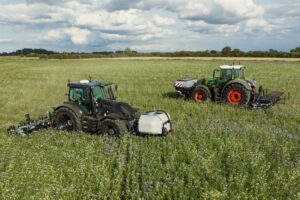Written by Horizon Agriculture. See Horizon in the Drill Arena for Direct Driller at Cereals 11th & 12th June, Bygrave Woods, Newnham Farm, Herts

With over 15 years’ experience successfully applying strip-tillage practices across the world, we decided to put together a guide summarising the applications, benefits, challenges, and effects of strip-tilling. To learn more, visit the SPX Strip Till product page, or take a look at the guide directly by clicking here.
As part of our mission to design innovative products that promote soil regeneration whilst also helping our customers to improve their productivity, yield and profitability, we recognise that many farmers will require a transitional period when moving towards a no-till system. We hope to empower farmers to adopt more sustainable practices by sharing our knowledge and experience.
Below is a brief summary of strip-tillage and the benefits it has for farmers looking to transition to a no-till system from fully cultivated soils. For more specific and technical information, including detailed explanations on the effects on the soil, different applications and methods etc, make sure to check out our strip-till guide.
What is strip tillage?
Strip-tillage combines the benefits of conventional tillage with the conservation-friendly advantages of no-till farming. The low disturbance, targeted tillage approach consists of only cultivating a narrow band of soil in which the crop is to be planted, leaving lanes of uncultivated soil and residue on either side. This process reduces risks of erosion, improves soil structure and enhances soil health, and is perfect for farmers looking to transition from conventional tillage to a much more sustainable no-till approach.
Summary of Strip-Till Advantages Over Conventional Tillage
- Fuel Savings – reduced primary and secondary tillage passes.
- Fertiliser Savings – Banding fertiliser to only cover the required areas can reduce rates by 30%.
- Reduce Soil Erosion – Most of the soil remains covered with crop residue throughout the year.
- Alleviate Soil Compaction
- Weed Control – Cover crop residues can suppress weeds between the strips.
- Maintain Levels of Soil Organic Matter – Less soil movement and therefore less mineralisation occurring.
- Improved Water Retention – Fewer cultivation passes results in the soil surface between the strips being covered with crop residue.
- Yields Similar to Conventional Cultivation
- Improved Travelability in Wet Harvest Conditions
